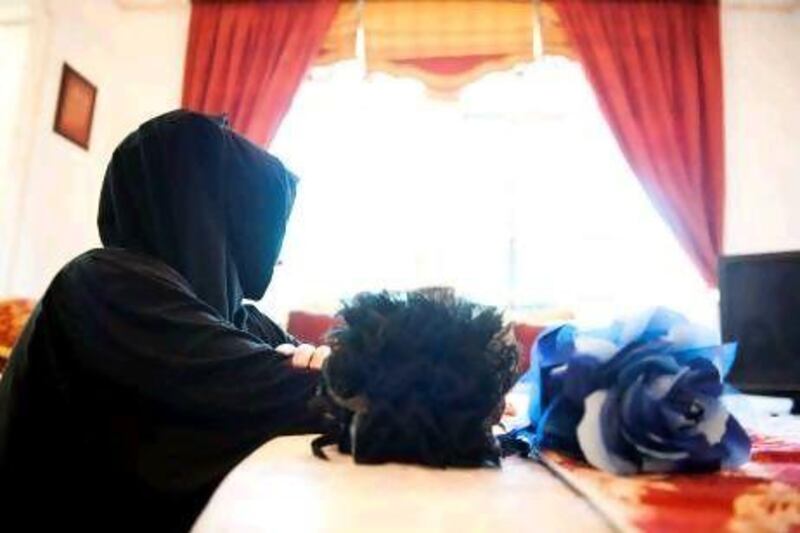DUBAI // Three Emirati men are working on a documentary about a UAE hairstyle dubbed the "camel hump".
The Gamboo3a Revolution explores how, why and when the abaya and shayla went from being symbols of devotion to statements of high fashion, paying particular attention to a hairpiece called the gamboo'a, which is worn beneath the shayla for a beehive effect.
The movie is being produced by Abdulrahman Al Madani, Saeed Al Emadi and Saeed Al Salmeen, second-year students of Applied Communications at Dubai Men's College.
"The gamboo'a trend started a while ago and there have been many jokes about it," said Mr Al Madani, 19, who came up with the idea.
"The girls wear it to attract attention. Some of them are so big, you wonder what's inside."
Mr Al Madani said he first heard of the gamboo'a in 2008 in a Sha3beyat Al Cartoon, an animated comedy series that addresses UAE social issues.
The documentary, now in the final editing process, includes different views from Emirati men, women and cultural commentators.
The men they interviewed were largely opposed to the trend.
"Most guys are against it because Emirati guys are conservative about girls, even if they are not conservative about themselves," said Mr Al Madani.
"I hope the documentary will raise awareness, especially among westerners who think this is how our women dress, which is a misconception."
Fatma Hassan, a female student from Zayed University who is featured in the documentary, has liberal views.
"I don't support the gamboo'a but if a girl likes wearing it, then it's her choice," Ms Hassan said. "Who is to say what she should wear? It's her freedom."
She said the Emirati community spent too much time talking about clothing when they should be talking about manners or behaviour.
A fellow student from Zayed University, Amna Ahmad, was more critical. "I think it's old-fashioned and people barely do it any more," Ms Ahmad said. "I'm sorry to say this but whoever still wears it is considered cheap."
Wedad Lootah, a marriage and family adviser also featured in the documentary, said women who dressed in a such a way opened the door to ridicule.
"Whenever I go to a lecture at a school or university I advise young girls not to give men the opportunity to laugh at them for wearing the gamboo'a, and to stay away from wearing it as it does not represent us or our culture in any way," Ms Lootah said.
Mr Al Emadi, 20, agreed.
"The gamboo'a also opens the door for male youth to harass women," he said. "Some of my friends say when they see a woman doing this to herself, it attracts their attention. A woman is better off covering herself than opening herself to harassment."
Mr Al Emadi graciously offers one exception to the rule: it is OK for parties and weddings.
His co-producer, Mr Al Madani, admits there is a lack of equality between men and women in the UAE.
"It's normal in our culture that people look the other way when a man does something wrong, but not for a woman," he said. "I don't know the reason why, but there is a lot of hypocrisy."
The men plan to submit their documentary to the Gulf Film Festival next year.






